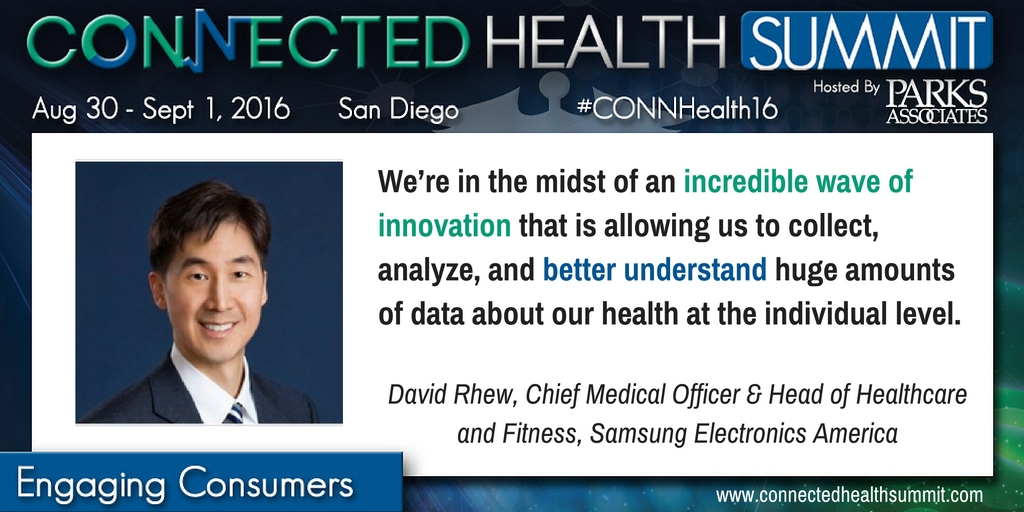Samsung: We will see an increasing number of strategic partnerships among health and tech players
 Before his keynote at the 2016 Connected Health Summit, we sat down with David Rhew, Chief Medical Officer and Head of Healthcare and Fitness of Samsung Electronics America, to ask him about his perspective on the connected health industry:
Before his keynote at the 2016 Connected Health Summit, we sat down with David Rhew, Chief Medical Officer and Head of Healthcare and Fitness of Samsung Electronics America, to ask him about his perspective on the connected health industry:
What's new in 2016 that keeps you upbeat/optimistic about the connected health market?
We’re in the midst of an incredible wave of innovation that is allowing us to collect, analyze and better understand huge amounts of data about our health at the individual level. Providers can use this data as part of a more robust information set when evaluating new patients or remote monitoring for existing patients after procedures or for those dealing with chronic conditions.
At Samsung, we’ve really seen the positive impacts of these new technologies in a number of settings, but particularly in hospitals, in patients’ homes and within senior care facilities. We expect this trend to continue especially as biosensor technology becomes smaller, form-fitted and smarter through better algorithms and analytics. Technology does not exist in isolation—and we must continue to think about how to use the latest devices to improve peoples’ lives and health outcomes—in my view making healthcare one of the most exciting industries to be in today.
What's the most effective strategy/approach you have seen that engages consumers for health and wellness behavioral changes?
I really think about outcomes and patient behavior in three ways. The first part is the digital technology itself—we need to seamlessly capture, secure, transmit and understand health data from patients.
We then need to ensure that this technology is used as part of a broader health program where the patient feels empowered to take ownership over his or her own health, including tracking fitness and wellness activities in a way that patients can easily understand.
And finally, leveraging the power of social networks to help patients feel supported and inspired can be an important part of the equation for many individuals—whether it’s something as simple as sharing successes resulting from diet modifications with their families or posting a picture after a long run with their friends.
What do you anticipate to happen in 2017-2018 that would have the biggest impact on the connected health market?
I have no doubt that we will continue to see major improvements and entirely new technologies in the form of wearables, sensors and innovative ways to connect data with end-users. As data is more seamlessly integrated into easy-to-understand smartphone applications or even games, we will continue to engage patients that historically were difficult to reach but will benefit greatly from these new technologies, including seniors.
Across the entire industry—from healthcare providers, to technology solution providers like Samsung, to innovative start-ups exploring new healthcare applications, I believe we will see an increasing number of strategic partnerships and widespread collaboration.

David will give the morning keynote on September 1, 2016. His keynote will examine the latest trends in connected digital devices and wearables that are reshaping how we engage and empower patients to take a proactive role in managing their health.
For more information about the event, including how to reserve your seat, visit www.connectedhealthsummit.com.
Next: CentraCare: Patients are more likely to engage if the process is simple
Previous: Using a patient's existing mobile device is most effective health engagement strategy: Insights from ARM
Comments
-
Be the first to leave a comment.
Post a Comment
Have a comment? Login or create an account to start a discussion.


